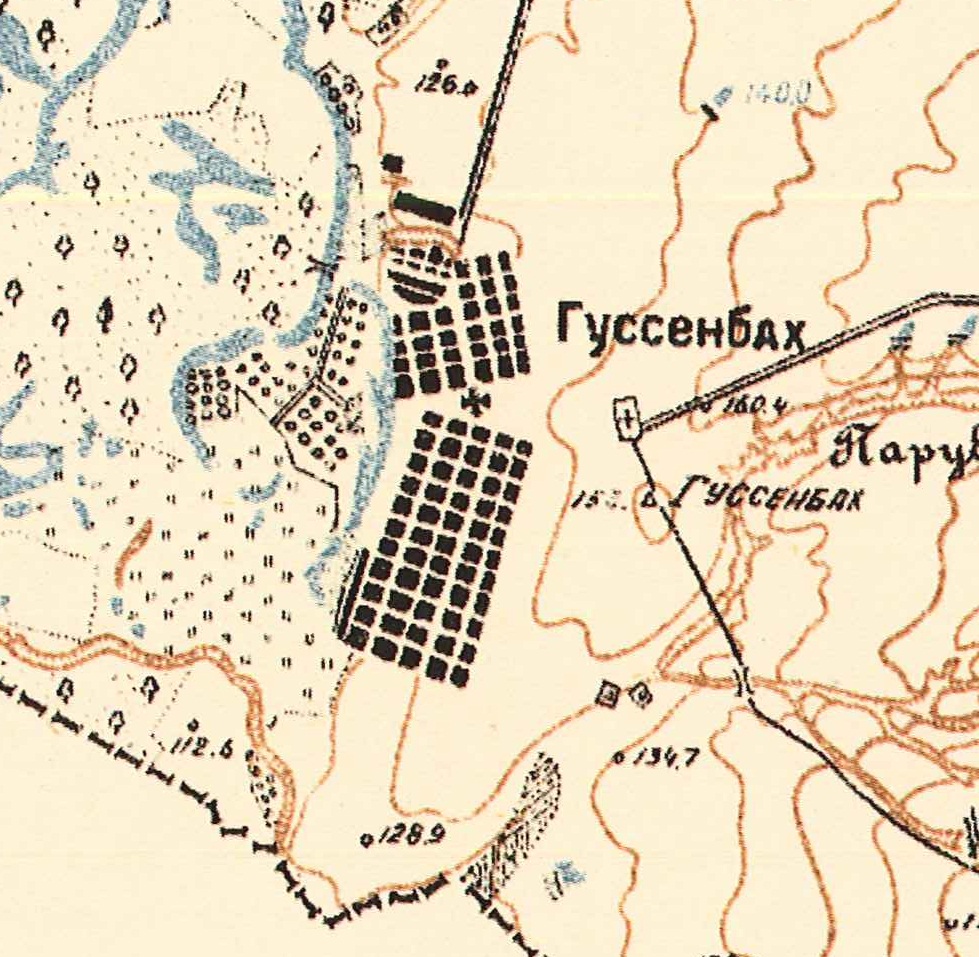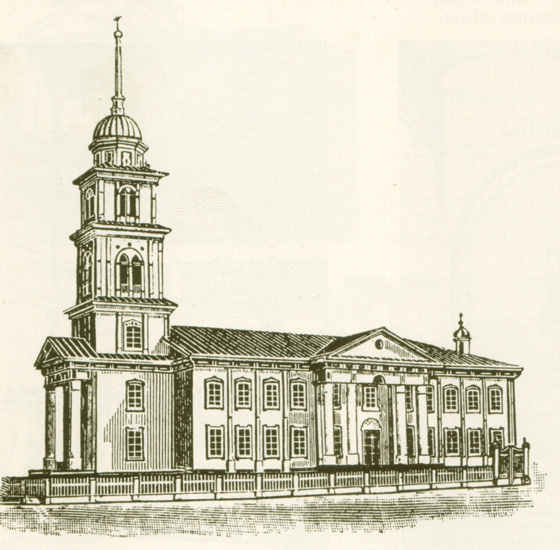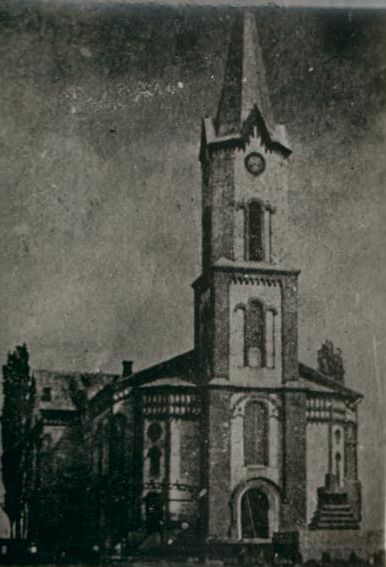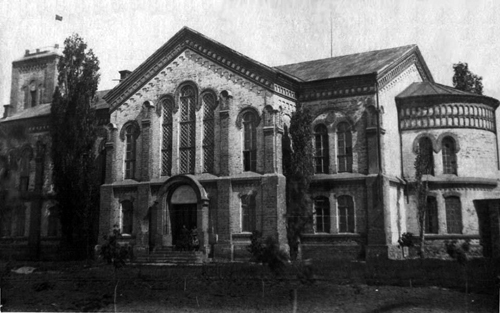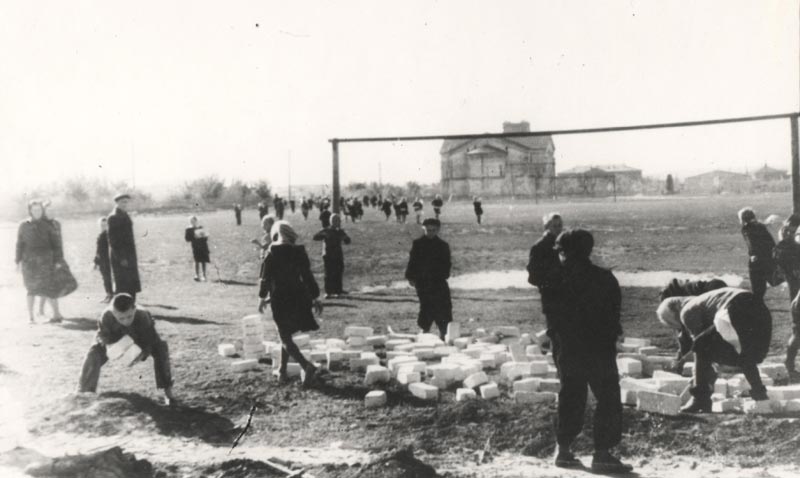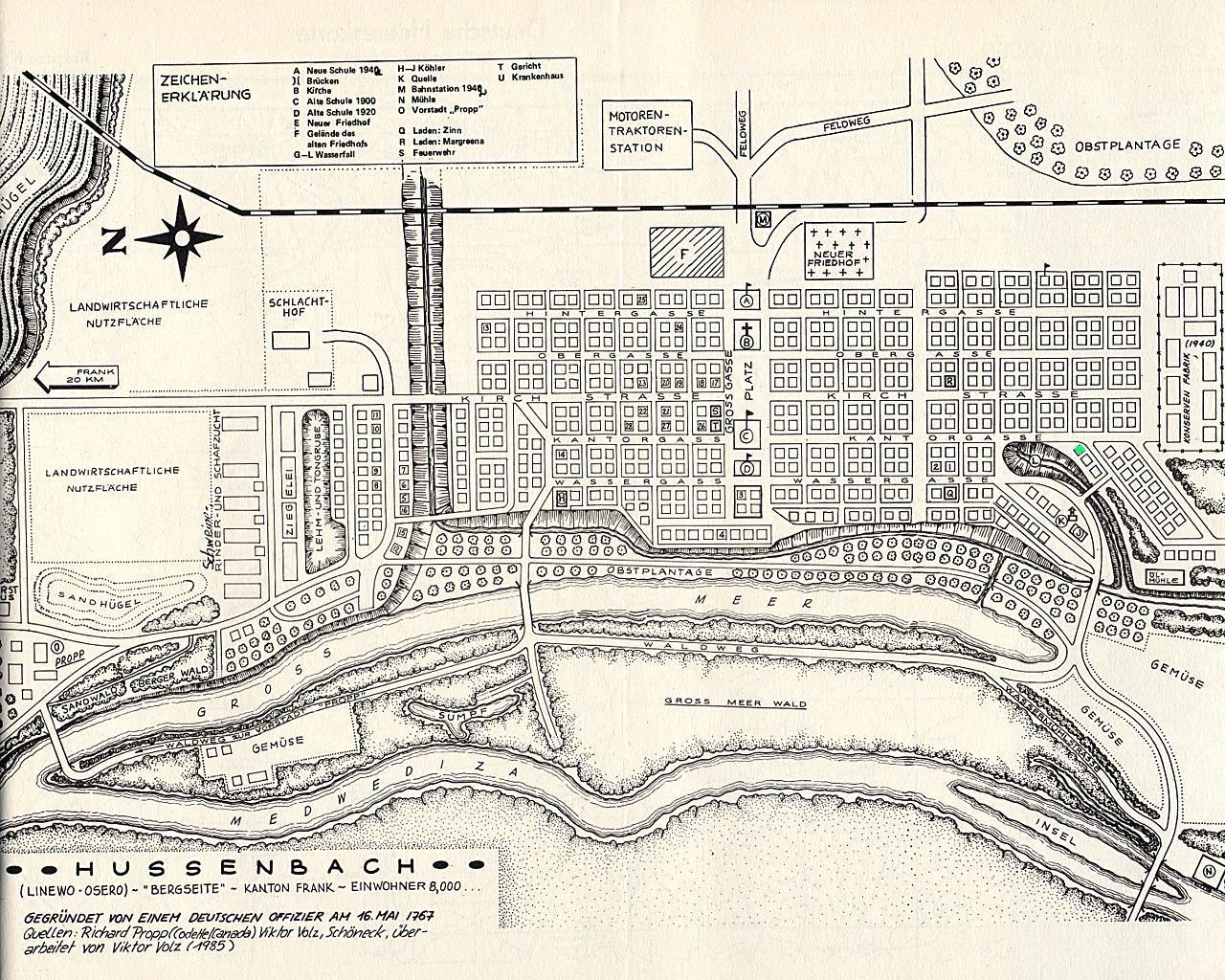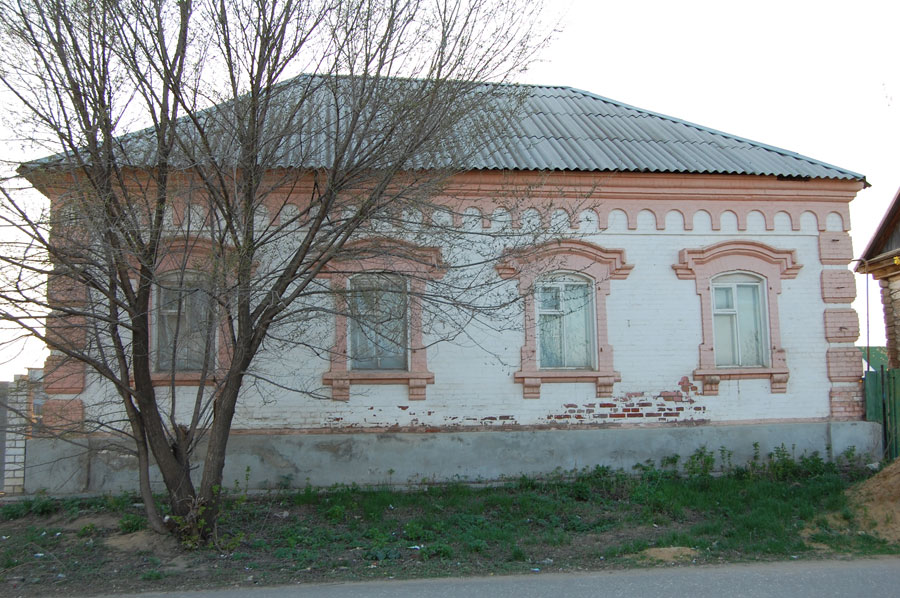In the early years, Hussenbach was part of the Frank parish.
The first church building was constructed of wood in 1785. A new building was completed in 1821 with a new larger church built of wood in 1885. This building was destroyed in the 1896 fire that destroyed most of the colony. A new church was built in 1903-1905 of bäckstein, a type of fired brick. It has been reported that this building could seat 2,500 parishners.
Hussenbach was founded along the Medveditsa River as a Lutheran colony on 16 May 1767 by the Crown. The original 118 founding colonists came from Brandenburg, Saxony, Darmstadt, and the Palatinate. Hussenbach was named after the first leader of this colony.
On the afternoon of 27 July 1896, a group of 7-8 year-old children were playing in the yard of Heinrich Sippel while the adults were working in the fields. At some point a fire was lit in the yard. The high winds fanned the flames which quickly spread to neighboring yards. By the time the fires were extinguished, 273 homes had been destroyed along with the church and numerous businesses.
|
Year
|
Households
|
Population
|
||
|---|---|---|---|---|
|
Total
|
Male
|
Female
|
||
| 1767 |
|
|
|
|
| 1769 |
118
|
438
|
240
|
198
|
| 1773 |
115
|
525
|
282
|
243
|
| 1788 |
109
|
701
|
359
|
342
|
| 1798 |
140
|
910
|
471
|
436
|
| 1816 |
180
|
1,397
|
694
|
703
|
| 1834 |
276
|
2,305
|
1,170
|
1,135
|
| 1850 |
289
|
3,062
|
1,551
|
1,511
|
| 1857 |
358
|
3,578
|
1,757
|
1,821
|
| 1859 |
|
3,678
|
|
|
| 1886 |
562
|
4,380
|
2,241
|
2,139
|
| 1891 |
525
|
6,143
|
3,141
|
3,002
|
| 1894 |
537
|
|
|
|
| 1897 |
|
4,661*
|
2,340
|
2,321
|
| 1905 |
|
7,350
|
|
|
| 1911 |
|
8,198
|
|
|
| 1912 |
|
8,080
|
|
|
| 1920 |
748**
|
6,783
|
|
|
| 1922 |
|
6,554
|
|
|
| 1923 |
|
6,400
|
|
|
| 1926*** |
1,036
|
6,774
|
3,309
|
3,465
|
| 1931 |
|
7,287****
|
|
|
| 1939 |
|
7,137
|
|
|
*Of whom 4,657 are German.
**Of which 746 households were German.
***Of whom 6,727 are German (1,017 households: 3,284 male & 3,443 female).
****Of whom 7,274 are German.
Lutheran
On 18 March 1918, Sexton Niesen from Hussenbach sent a letter to the United States asking for people to write back. He gave a list of places where people from Hussenbach were living in the United States. Places he listed were Elliot and Lisbon in North Dakota; Minnesota; Rocky Ford, Colorado; Portland, Oregon; and Walla Walla, Washington.
Beratz, Gottieb. The German colonies on the Lower Volga, their origin and early development: a memorial for the 150th anniversary of the arrival of the first German settlers on the Volga, 29 June 1764 . Translated by Adam Giesinger (Lincoln, NE: American Historical Society of Germans from Russia, 1991): 350.
Diesendorf, V.F. Die Deutschen Russlands : Siedlungen und Siedlungsgebiete : Lexicon. Moscow, 2006.
Mink, A.N. Historical and Geographical Dictionary of the Saratov Province [in Russian] (Saratov, Russia, 1898): 569-572.
Neisen, Sexton. "Who will Write? Who Says 'Yes", Die Welt-Post (Lincoln, NE: 22 April 1926): 5.
Orlov, Gregorii. Report of Conditions of Settlements on the Volga to Catherine II , 14 February 1769.
Pallas, P.S. Reise durch verschiedene Provinzen des Russischen Reichs. Theil 3,2, Reise aus Sibirien zurueck an die Wolga im 1773sten Jahr (St. Petersburg: Kaiserl. Academie der Wissenschaften, 1776): 623.
Pleve, Igor R. The German Colonies on the Volga: The Second Half of the Eighteenth Century , translated by Richard Rye (Lincoln, NE: American Historical Society of Germans from Russia, 2001): 318.
Preliminary Results of the Soviet Census of 1926 on the Volga German Autonomous Soviet Socialist Republic (Pokrovsk, 1927): 28-83.
"Settlements in the 1897 Census." Journal of the American Historical Society of Germans from Russia (Winter, 1990): 18.
Hussenbach (wolgadeutsche.net) - in Russian
Hussenbach (Linevo Osero) Village Webpage (Susan Nakaji)
Photo gallery of Arthur Staff.
